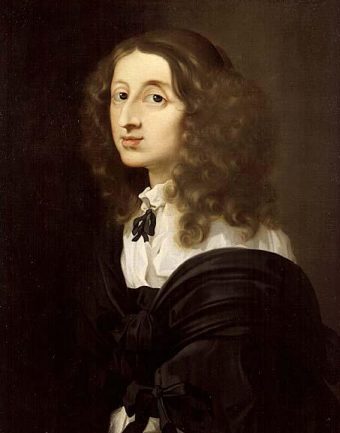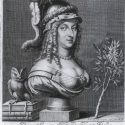Queen Christina of Sweden was the daughter of the Swedish warrior king Gustav II Adolf, the standard bearer of the Protestant world. In preparation for her reign, she received a distinctly male education and upbringing based on the ideals of classical antiquity, formulated by Herodotus as being the ability to ride, to draw the bow, and to speak the truth.
Her education was also influenced by the humanism of the Renaissance, and in the course of time she also developed a profound interest in natural sciences. A lifelong aversion to marriage played an important role in her abdication in 1654. After converting to Catholicism in Innsbruck in 1655, she travelled to Rome, where she remained until her death.
Due to her all-round education, she became a key figure in the religious and cultural life of the period. Her literary works were published posthumously, the first time by Johan Arckenholtz in Mémoires concernant Christine, reine de Suède, pour servir d’éclaircissement à l’histoire de son règne et principalement de sa vie privée, 1751-1760. Here we find Ouvrages de loisir, ou maximes et sentences, her autobiography La Vie de la Reine Christine, faite par Elle-Même, dediée au Dieu, and two essays, Réflexions sur la vie et les actions du grand Alexandre and Réflexions sur la vie et les actions de César.
The three central themes in Queen Christina’s writing are God, women, and the heroic person. Arckenholtz’s publication shows the queen to have been an industrious writer who, like the slightly younger daughter of the Danish King, Leonora Christina, was well versed in the genres of the memoir and the epistle.
Further Reading
Veronica Buckley: Christina, Queen of Sweden: the restless life of a European eccentric, 2004
Marie-Louise Rodén: Queen Christina, Stockholm, 1998



